GETTING AROUND IN JAPANESE CITIES
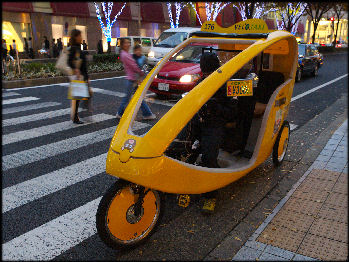
velo taxi Japan has one of the best urban mass transportation systems in the world. There are subways in eight cities. In other places railways serve as mass transportation system. Everywhere there are good bus networks. If all else fails it is easy to catch a taxi. Bus and subway route maps can usually be picked up at the airport, tourist offices, and some train stations.
With that said, Japanese cities are big and confusing; it is hard to get around only by walking; taxis are expensive; and mass transit is good but the routes and systems are difficult to sort for first time users. The sidewalks are often crowded with pedestrians and bicycles.
Most small streets have no name, addresses refer to a series of concentric areas, streets are sometimes numbered according to when they were built rather than their location, and taxi drivers respond to landmarks not street numbers. Before setting out anywhere it is a good idea to have detailed directions and a good map in English and Japanese. Most stores and restaurants can fax a good map to your hotel if you them call them in advance. Most taxi-drivers don't speak English.
If you can help it avoid taking the trains, subways and buses during rush hour between 7:30am and 9:30am and 5:00pm and 7:00pm when they can be quite crowded. If you get stuck on rush hour train try to position yourself near to the door so you can get out when you reach your stop.
If you can three of four people together to split costs you can save yourself a lot of time and hassle by taking taxis around. If you are on your own taxis may prohibitively expensive and getting around will take same planning and research because only some places can be reached by subway or train and many require a bus trip. You may want to consider a tour.
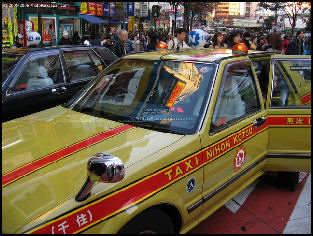
Taxis are plentiful and expensive and found almost everywhere. Cruising taxis have meters (the flag fall rate is 600 yen for the first 2 kilometers and 90 yen for each additional mile). A 15 minute cab ride costs around US$30. The rates go up 20 to 30 percent after 11:00pm.
Taxis can be caught at taxi stands or flagged down in the street. They can usually be found at railway and subway stations. Tipping is not usually practiced. Available taxis display a red light in the lower right hand corner of the windshield. A green light means the nighttime rate is in effect. A yellow light means the taxis is on call.
Since most drivers don't speak English, make sure you have an address and the name of a nearby landmark near where you are going written in Japanese. It also helps to point out on a map where you are going. Addresses in Japan are different from those in the West.
Most taxis are spotlessly clean Toyota Crowns. They have passenger doors that are opened and closed by the driver using a remote control lever, so stand back. Some even have vibrating magic-fingers seats and VCRs which show old samurai movies. Taxi drivers often wear white gloves. They do this for several reasons, including: 1) so their hands don't get sunburn; 2) to indicate the cleanliness of their vehicle; 3) to keep sweat off the steering wheel.
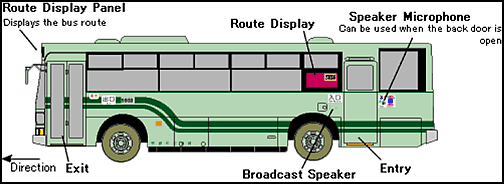
Kyoto bus
Buses are not recommended in most cities; you are better off taking the subways or trains. Most buses run complicated routes and the signs are usually not in English. Kyoto is the only real exception; its has a simple bus system with flat-rate fares and buses with English signs.
Local buses are crowded and you often have to stand. Seats are customarily deferred to people over 60 and women with babies. If you decide to take a baus, check the bus stop signs for information (often in English) and choose a bus by its number rather than destination. Once on the bus show the driver or a passenger a note written in Japanese that shows where you want to get off so he can help you.
Bus ticket and fare systems vary somewhat from place to place. The bus usually fares vary according to distance and fares are usually paid on the bus.
In many places you enter the bus from the rear door and take a seiroken numbered slip from box on your left as you enter. The number on the ticket and how much you pay is shown on a changing board above and to left the of the driver at the front of the inside of the bus. Children under 12 often pay half the fare and children six and under are free.
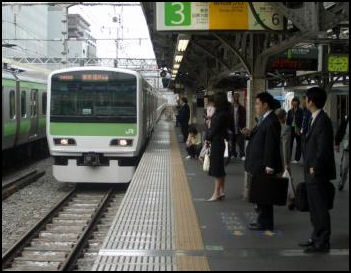
Tokyo subway Trains and Subway in Japan are first-rate and service most destinations, even in small cities, but the routes can be very difficult to figure out for the first time user. Especially troublesome is the fact that service is often offered by several different train companies in Tokyo, Osaka and other cities. Most trains and train stations have signs in English.
There are subways in eight Japanese cities with nearly 700 kilometers of track. The subway system operates between 6:00am and 12:00 midnight. After midnight you'll to take a taxi. If you can, don't ride the subways during rush hour (7:30 to 9:30am and 5:00 to 6:00pm), when they are extremely crowded.
The map for the Tokyo subway looks like a wiring diagram for Cray super computer but with some patience you should be able to sort it out. Stations which handle several lines usually have color-coded circles and arrows that indicate the way. If can't figure out what to do, Japanese bystanders often will be glad to help you.
Japan Rail long distance train can sometimes be used to reach inner city or suburban destinations. Other local train systems can be also be used. Different subway and train systems have their own separate windows and ticket machines.
Getting out of train stations can be problematic. English-language maps of the local area are often found on walls of subway stations. When leaving the station for the first tie check this map and try to figure out where you want to go and leave through the numbered exits you see on the map.

Crowded Subways are common on well-traveled lines during rush hour. Describing the scene at busy Kawasaski station in Tokyo, Sheryl WuDunn wrote in the New York Times, "As the doors were about to close...a young Japanese woman rushed to platform, bowed deeply in courtesy to the crowded tangle and then charged into the human mesh...Some just thrust themselves in. Some slip in on the side. Japanese trains are usually on schedule and so those who time their commutes down to the minute often prefer the last-in, first-out method, which they must maneuver in just as the doors are closing."
During rush hour hired "tushy pushers" shove people into the trains. One female tushy pusher told the New York Times, "it's not a very good feeling to be pushing passengers, for its kind of troubling them." Pushing both men and women is awkward she said, "if their back is toward us, it's easier, but if they're facing us, its harder because there's no proper spot to push them, though we try to push their bags or something else they are holding. In any case, we always say first. We will push you."
Tokyo's trains and subways are slightly less crowded than they used to be. But still they are crowded. Cars at rush hour at one Tokyo station are packed to a 183 percent of capacity but this is better than 221 percent of capacity, which was the case in 1975. One pusher told AP, "We used to have to pull back the passengers who couldn't squeeze their way in. Now we can push them all in."
Reasons why the trains are less crowded include new lines, more trains on existing lines, falling birthrate, the increase in part time workers who work flexible hours. Plans to build more lines to reduce capacity to 151 percent will cost about $40 billion.
Once on the subways, Japanese subways are pretty quiet. Many Japanese commuters fall asleep almost instantly after getting on the subway. Many of those who are awake play games or send messages with their cell phones. Talking on cell phones is discouraged.
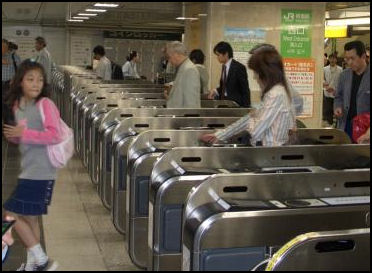
Tickets for Trains and Subway: Tickets for inner city surface railways and subway lines are generally purchased from a vending machines that accept coins and banknotes up to 10,000 yen Generally, you insert your money and press a button with the price of the ticket. This means you have to know the price of the ticket. Keep your ticket after you enter the station; it has to be put in the machine at your destination.
The fares are based on distance traveled. The fares are usually indicated in English on a fare map posted y the ticket vending machine. The station you are at us indicated by a red circle. If you have trouble somebody working at the station can be usually help you out. If you can not figure out the fare buy one of the cheapest tickets and pay the difference at your destination by placing your ticket in an additional fare machine near the turnstiles where you exit.
Discount Tickets: Multi-ride passes for one, two or three days or a week are available and they can be used on buses, streetcars and subways. The passes and brochures explaining them are available at bus and train stations. Japanese Rail Pass usually don't include transportation on subways but they can be used trains that pass through urban areas. See Tokyo and other cities for specific information.
Bicycles. see Below.
GETTING AROUND BETWEEN CITIES AND TOWNS

ANA Most people in Japan travel by train on what is perhaps the most efficient and convenient rail service in the world. Trains link all major destination and reach many remote places. Any place without a train station is usually served by a bus.
The famous Shinkansen bullet trains are often faster than planes for distances up to 400 miles. Planes are mainly used by people who are in a hurry to reach a destination not serviced by the bullet train. Buses are generally cheaper than the trains and they usually service destinations not reached by the train. Few foreigners rent cars in Japan.
For these that need them, telephone-book thick transportation schedules and timetables are published that describe the schedules for almost every train, bus and ferry in Japan.
Eki Supato (www.vallab.com/expcg/exp.cgi) is a unique travel planer that allows used you type in a point of origin and destinations and the program searches 9,600 railway and airline schedules in seconds ad tells you the quickest routes there, what lines to take, the distance and time involved, the number of transfers and even the total cost of the trip.
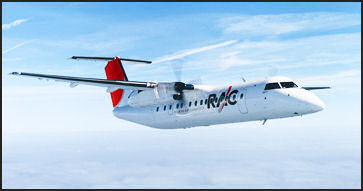
JAL Airplanes serving domestic routes are very expensive. A ticket between Tokyo and Sapparo is often more expensive than one between Tokyo and Los Angeles. Only two airlines control Japan's domestic routes: 1) Japan Airlines (JAL, JAL) ; and 2) All Nippon Airlines (ANA, ANA) . The oligopoly controlled by the airlines keeps prices artificially high. To save money both JAL and ANA have suspended air service on a number of domestic air routes and reduced the number of flights on others.
The deregulation of Japan's airlines began in 1998. New cheap airlines like Skymark and Air Do have sprung up. Their flights are mostly to Hokkaido.
In the mid 2000s four airlines?JAL, ANA, Skymark (Skymark site) and Hokkaido International (Air Do Japanese -language site , Air Do ) “fought a far war over the Tokyo-Sapporo route, with one-way fares as low as ¥9,000. ANA and JAL have reduced their fares on well-traveled routes such as Tokyo-Osaka to compete with the Shinkansen.
Buses generally connect train stations with small towns not serviced by trains. Most Japanese travel by train and most municipal buses are intended to compliment rail travel. Bus stops and terminals are generally situated close to the train stations to provide transport from the train to nearby villages and towns.
JR runs long distance buses as well as trains. There are other long distance bus companies as well. Buses are generally cheaper but take longer than the trains.. Some buses used for long-distance travel have deluxe reclining seats, provide tea and blankets, and have a toilet.
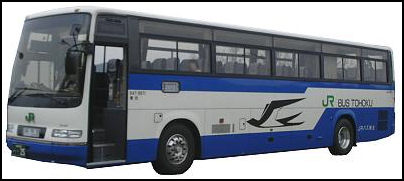
highway bus
Night Buses: Many long distance run at night to avoid traffic. Ones that operate in daytime, offering good views of countryside but sometimes get bogged down in traffic. A plus with the night buses is that you can save money on overnight accommodation. On the down side you have to sleep in a bus seat?one that reclines pretty far backwards, but a bus seat nevertheless?and make stops at rest stops throughout the night and has lights out rules
Night buses between Tokyo and Osaka are as cheap as US$40. The seats on the cheapest buses recline but are not so comfortable. A premium seat on a higher grade bus goes for $100, about two thirds of the cost of the shinkansen. On these buses the seats are wider and recline 156 degrees and its much easier to get to sleep. A couple of night bus crashes involving sleepy drivers who drove without taking breaks has raised concerns that cheap bus service could be compromising safety.
TRAINS IN JAPAN
Trains are operated by Japanese Railways (JR)?which a few years ago was divided into JR East and JR West?and numerous local train lines that generally service a specific region such as the Tokyo area or the Kansai (Osaka and Kyoto) region. The railroad is so confident that you will arrive at tour destination on time that sometimes passengers are given refunds if trains are late.
Japan has the world's busiest rail network. About 18½ million people use the trains everyday in Japan and 40 percent of the total passenger travel is on railway transport (compared to 90 percent on road transport in the United States). The East Japan Railway Co. operates the world's busiest train system, with 6.6 million passengers riding it every day providing revenues of $19.5 billion a year.

different shinkansen trains
There are more than 20,000 kilometers of railways and 26,000 daily train services in Japan. The only time you might consider taking a bus over a train is when you are traveling in rural areas not serviced by a train. Small villages that aren't connected by train usually are connected by bus to the nearest railway station.
The trains are very comfortable. Rather than having first and second class cars in the same trains there are different trains serving the same route that vary in quality, speed and price. Some have reclining seats. Others have seats oriented face to face. Few trains have dining cars. Some have snack vendors who sell drinks and snacks from carts wheeled through the train cars. Many Japanese buy meals (especially bento box lunches), drinks, and water at the train station and bring it with them on the train.
Most of the signs in train stations are in Japanese and English. You can get train and subway maps at tourist offices and some train stations, For information on trains try JR East English Info Line: ☎ (03)-3831-0131; or JR’s English-language line at (03)-3423-0111. Book: “ Japan by Rail” by Ramsey Zarifeh (Trailblazers, 2001). Also try the JR website: Japan Rail (JR) and the informative website on local trains Getting Around on Local Trains in Japan
There is a Japanese- and English-language website (Jorudan ) that tells users how long a journey will take, the cost and best connections. Also try Seat 61 (Seat 61 Japan)
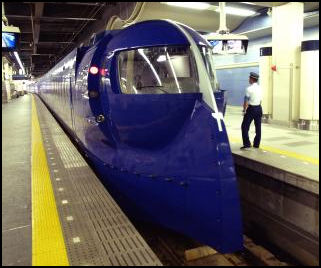
Japan Rail (JR) Trains: Japan Railways (the national railway system) maintains the world's most punctual, safe and speedy trains. They operate over 25,000 trains each day, including the famous Shinkansen bullet trains, which run at 150 mph or more to destinations all over Japan. Other slower JR trains connect nearly all major destinations in the country and they are also a good way to see to the Japanese countryside.
Japan Railways operates five main types of passenger trains. They are, in descending order of rapidity and expense: 1) Shinkansen Super express; 2) Tokkyu (limited express); 2) Kyuko (limited express); 4) Kaisoku (rapid train); and 5) Futsu (local train). The first three kinds of trains generally have both reserved and non-reserved seats.
Some long-distance trains have sleepers, but generally the journeys are short and quick enough that they are not needed. There are long distance sleeper trains between Osaka and Niigata; Tokyo and Sapporo; and Osaka and Sapporo but many of the old sleepers?such as the Blue Train between Shimonoseki and Tokyo?have been closed down due to competition from planes and the Shinkansen.
The fast JR trains also offers superior class coaches called "green cars" and sleeping car trains on some routes. There is a surcharge for these services as well as for the Shinkansen, Tokkyu and Kyuko trains. Unlike the basic trains services, surcharge tickets are only good for one continuous journey. The two slower kinds of trains serve mostly as commuter trains. There are also regional train services.
Shinakensen (bullet trains) go as fast as 170 miles per hour. In 1999, many old bullet trains on were phased to make room for the new 700 series Nozomi trains which travel 285kmp compared to 210kph for the old bullet trains. The Shinkansen is famous for reliability, safety and punctuality. The average delay is usually around 10 seconds. In 2004 when the average delay increased to 42 seconds as a result of typhoons, earthquakes and some other problems it was considered as disgrace.
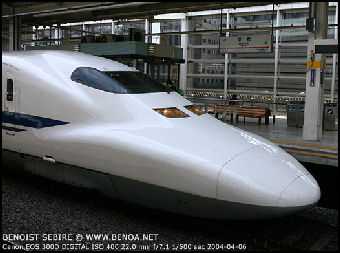
Shinkansen lines extend for 2,397 kilometers and carry over 250 million passengers a year. The bullet trains travels on a 25,000 volt electric line on tracks welded smoothly together to eliminate the clackety noise caused by conventional railway joints. The trains have a computerized system that automatically slows the train if an earthquake is sensed. In over 40 years of service there has never been a fatality.
Travelers on the shinkansen need to purchase a train ticket and seat ticket before boarding the train. You are not obligated to buy a seat ticket but this might mean you have to stand. The service is frequent with trains often leaving every 10 or 15 minutes. Some trains stop at all the shinkansen stations. The fastest trains stop only at the major ones. There is no sleeper service on the shinkansen as these trains do not travel late at night.
The seats on the seats on the bullet trains are like those on an airline, except there is more leg and arm room. There are vending machines and telephones between cars and uniformed women roam the aisles with carts of bento lunches, whiskey, sandwiches and ice cream. Some Japanese trains have masseuses that give 15 minute massages from $15.
The are five main shinkansen routes, all originating in Tokyo: 1) One line runs between Tokyo, Nagoya, Kyoto, Osaka, Hiroshima and Hakata in Kyushu. 2) a second line runs between Tokyo and Sendai and Morioka in northern Japan. In December 2002, this line was extended 97 kilometers northward to Hachinohe in Aomori Prefecture. 3) A third line heads north from Tokyo and branches off at Fukushiama to Yamagata. 4) A forth lines goes from Tokyo to Niigata on the north coast of central Honshu. 5) The line built for the 1998 Olympics travels between Tokyo and Nagano in the Japanese Alps.
The Tohoku Shinkansen was extended all the way to Aomori at the northern tip of Honshu in November 2010 with the completion of the 81.8-kilometer section between Hachonoke and Shin-Aomori stations in Aomori Prefecture, meaning it was now possible to travel from the north of Honshu all the way to Kyushu by Bullet Train. A new model of Shinkansen called the Hayabusa (Falcon) was scheduled to be introduced on the line in the spring of 2011. These train will operate at speed up to 300 kph, compared to 274 kph for the Hayate (Swift Wind) trains currents in service. The new Shinkansen to Kagoshima opened in March 2011. The fastest trains cover the distance between Osaka and Kagoshima in three hours and 47 minutes, and between Fukuoka and Kagoshima in one hour and 20 minutes.
The are several different shinkansen trains. The original Shinaksens belong to the 0 series. They were replaced in the 1970s by the more comfortable Series 100 trains, which continued running until 2003. In 1992, the Series 300 Nozumi trains made their debut. Built largely of aluminum, they are 25 percent lighter than pervious models and have a maximum speed of 270kph. The newest train is the Nozumi Type-500. It has a maximum speed of 300kph and covers the 905-kilometer route between Tokyo and Hakata on Kyushu in 4 hours and 49 minutes. Website: JR Shinkansen siteJR Shinkansen

Red express Train Tips: 1) train cars are sometimes changed along a train route. Make sure you in a car that is heading all the way to your destination. 2) Make sure if you buy a ticket a day in advance it can be used; 3) Remember to get a reserved seat on long distance trains. 4) Try to catch trains form their embarkation point if you don’t have a reserved seat. You are more likely to get a seat.
Train Stations are often like mini cities complete with shopping areas and a wide variety of restaurants, bars and fast food places and facilities like travel agencies, tourist information offices and luggage-storage lockers,
Luggage: Try to limit you luggage to what you can carry on the train. Many Japanese ship their luggage ahead so they don’t have to carry it with them. The service is reliable. It is possible to send your luggage from one hotel to another for around $15 with the luggage arriving in less than 24 hours. Most train stations have lockers, which you can use to store you luggage. They come in a variety of sizes.
Sleeping Cars and overnight trains are not very common. They are available on some of the long-distance trains to Hokkaido and Kyushu. For a regular three-tier bunk the surcharge is about ¥5,000 and more for two-tier bunks and "royal" compartments. There is no sleeper service on the shinkansen as these trains do not travel late at night. Sleeping compartments are unisex and strangers often sleep together is the same compartment.
Train Tickets
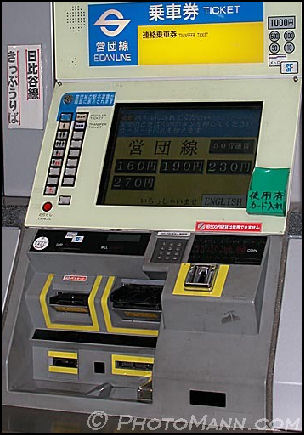
ticket vending machineThe price of the tickets varies according distance and tickets are generally purchased from a ticket counter or a machine. Most tickets over 100 kilometers have a validity period of two or three day, and as long as a week depending on distance.. This means passengers can make as many stopovers as they want within the period validity (in some cases there are restrictions about getting of a major stations though). Keep your ticket until get off the train and leave the train station.
It is a good idea to arrive at the train station early so you have enough time to sort out the tracks and schedules. Most services are fairly frequent so if you miss one train you usually don't have to wait long for the next one.
It is advisable to purchase tickets in advance if you are traveling during a peak travel season. Tickets can also be bought on the train but they cost more than tickets bought at the railway station. Outside the peak travel season, purchasing tickets before you board the trains is generally okay.
Basic fare and reservation tickets can be purchased at “Midori-no-madoguchi” ("Travel Service Centers") in major JR stations or from authorized agents such as the Japan Travel Bureau, Nippon Travel Agency. Tokyo Tourist Corp., Kinki Nippon Tourist and other major travel agents. Other than rail passes, there aren't that many discount ticket options.
Seat reservations are optional for most local trains but are often necessary for shinkansen and other long distance trains. There is an additional charge for reserved seats and sleeping berths, which must be paid by both rail ticket holders and rail pass holders. The reservation fee is US$8 for a seat; US$20 for a sleeping compartment. Reservations can be made at train station ticket offices and on the Internet.
Japan Rail Pass is the most economical way to for foreign visitors to travel in Japan. Available to non-Japanese tourists and non-resident Japanese nationals, these passes can be used on Japan Railroad (JR) trains as well as JR affiliated buses and ferries. The pass is sold outside of Japan at authorized travel agents (call the Japan Tourist office for information), and it can not be bought inside of Japan. The pass is purchased abroad as an Exchange order, which is converted into the actual pass after arrival in Japan at a JR Travel Service Center.
The Japan Rail Pass can be used on shinkansen (except "NOZOMI"), limited express, express and local trains on all JR lines. There are two types of Japan Rail Passes: Ordinary (cover regular fares) and Green (used of Green superior class cars).
A seven day pass is about US$280 (ordinary) and US$370 (green), a 14 day pass is US$440 (ordinary) and US$600 (green), and a 21 day pass is US$570 (ordinary) and US$780 (green). Pass prices for children between 6 and 11 are half the above fares. Addition charges are added for riding on non-JR lines and staying in sleeping cars. Website: Japan Rail Pass site Japan Rail Pass
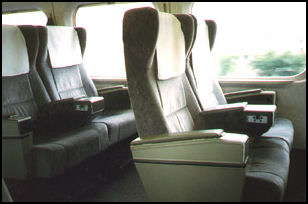
train seats Discounts Tickets: The Seishun 18 Kippa cost ¥11,500s for five days of travel. The only restrictions are that 1) the pass must be purchased during school holidays in March-April, August-September and December-January; 2) it must be used within a period of up to two months, depending on the time of purchase; and 3) it can only be used on local trains and is not valid on the Shinkansen and Express trains. Originally designed for university students it can be purchased by anyone of any age or any nationality.
The Seishun 18 comes in the form of five separate tickets. One of the nice thing about the pass is that the tickets can be shared. If you are traveling with a friend or two friends you can all use tickets from the same Seishun 18 package and do no need to buy separate for each individual.
Using the Seishun 18 is bit like traveling as a commuter over long distances. The savings are great but so are the hassles. A ticket for each day cost about $20. If you use it to, say, go between Tokyo and Kyoto, this is considerably less that $115 it would cost to take the shinkansen. However the trip tales nine hours and involves numerous train changes and waits in station, while shinkansen takes about two hours and doesn’t involve any changes. Moreover, working out which trains to take, which stations to change trains and what times the trains run can be a daunting task unless you can read Japanese or have a Japanese friend with you.
Tickets can be purchased at Midori-n0-Madoguchi (green window) reservation office of the Travel Service Centers at any JR station with long-distance trains. The only problem is that staff members don’t speak English and the timetables they give out are in Japanese. Many travel agencies, especially those in hotels, also sell the pass. They often have English-speaking staff and information and timetables in English.
JR Tokai and the the Japanese travel company JTB offer cheap shinkansen packages for foreign tourists. One tour for example offers round trip tickets between Tokyo and Kyoto and one night’s accommodation in Kyoto for ¥19,000, A regular round-trip ticket costs ¥26,440.
Additional Ways to Save Money: 1) For tickets over 400 miles a 20 percent discount is given for round-trip tickets; 2) Shuyuken, or direct non-stopover tickets can be purchased at 20 percent off; 3) Coupon tickets are sometimes available; 4) package tour often times include reasonable train fares; 5) children six and under are free, those aged seven to 12 pay around half the full fare.
There are 10 types of Integrated circuit (IC) cards that can be used to pay fares on railways and buses, including Passmo in the Tokyo area, Suica in the Osaka and Kyota area and Manaca in the Nagoya area. Some cards cards can be used interchangeably but others can?t. There is currently an effort to make them all compatible and interchangeable.
DRIVING IN JAPAN

Roads are generally first rate in Japan. There is a dense network of state highways and secondary roads enabling motorists to reach all parts of Japan. With the exception of some roads being too narrow, the roads in Japan are in most cases better than those in the United States.
The roads are in excellent condition and there are a large number of highways making transportation between the major cities relatively quick and efficient when traffic is light. Along major highways are restaurants and 24-hour service stations. Major highways have regular rest stops. Tourist information boards are located at each of these locations. Usually they are written only in Japanese.
City roads are often narrow and congested. Bicycles, trucks, cars and buses all have to share the same limited space. Pedestrians are sometimes clipped by vehicles because there are no sidewalks. Japanese cars are often outfit with side views mirrors that retract, allowing vehicles to squeeze through tight spaces.
Country roads are often as narrow as bike paths and special mirrors and passing areas are set up at curves to allow cars going in opposite directions to pass one another. In Tokushima Prefecture more than half the road are only wide enough for one car to pass at a time.
Japan’s has 8,500 kilometers of expressways. Most of them are toll roads with very high tolls. Expressways, with tall walls that arch over the road and trap sound, wind through crowded urban neighborhoods. In Osaka there are highways that go through buildings and houses built under sections of elevated highway. On holidays and busy weekends the traffic jams on expressways can go for dozens of kilometers.
Traffic is sometimes a problem, especially during rush hour, weekends and holidays. Some roads are also filled with truck but Japan trucks are generally smaller and less threatening than their American counterparts. Parking and reckless drivers and motorscooters drivers are problems in the cities.
Speed Limit: 62mph (100 km/h) on regular highways; 80 mph (50 km/h) outside cities and towns; and 31 mph (50 km/h) in cities and towns.
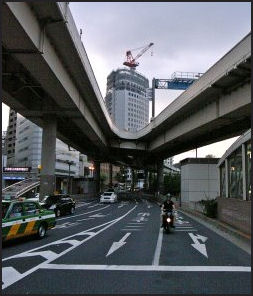
Driving in Japan is not recommended in the cities but isn't too difficult in rural areas except there can be a lot of stop lights on secondary highways. Driving is on the left side of the road (like Britain), the road signs are sometimes only in Japanese and distances and speeds are measured in kilometers.
Gasoline cost about ¥120 per liter (over $4 per gallon) and filling up the tank for a small Honda cost about $50. Tolls are also very high. Tolls for the five-hour round-trip between Tokyo and Mt. Fuji can run as high as $75. Sometimes the tolls for crossing a single bridge can be over $50.
Many “two-way? road are so narrow that one has to back up and give when two cars confront each other. Driver often don’t use their turn signals and run red lights (the time between a yellow light and a green light in the other direction is longer than in the United States, giving a driver a little extra time when the light turns form orange to red).
Even though Japanese drivers are generally very good and considerate and the driving laws in Japan are more or less the same as those in the U.S., drive defensively anyway. Make sure your car has a spare tire, jack, spare battery water, an extra fan belt and an emergency triangle. There are lots of mechanic, service stations and gas stations on the highways in Japan.
Japanese often park their cars illegally and block traffic, turning busy two-lane streets into one-land roads and four line highways into two lane roads. According to police there are about 127,000 illegally parked cars in the Tokyo area alone at any given moment. Often times the cars blocking traffic are occupied by salarymen who are sleeping or reading pornographic manga comic books.
For information on traffic, road and driving conditions in a number countries check the website for the Potomac- Maryland-based Association for Safe International Road Travel:

Driving Laws and Customs: Drivers and passengers are required to wear seat belts, motorcyclist must wear a helmet and children are restricted from sitting in the front seat. The traffic signs are different in Japan. Stop signs are but triangular in shape.
In the cities people sometimes dim their lights when pulling into a stop light at night. Traffic from the right has the right of way even when merging from a small side street. In the countryside, slow drivers are sometimes expected to pull over to shoulder of the road to let the faster traffic get by. Watch out for bicyclists.
Driving on the Left Side takes some practice. People who are not used to it run the risk of forgetting which side of the road they are on and having a potentially-fatal head-on collision. They also 1) have trouble judging distance on the left side of the road; 2) have trouble with manual shifts which require use of the left hand rather than right hand; 3) confuse turn signal and windshield wiper signal, which are placed on opposite sides of the steering column. 4) and often enter the car through the passenger door by mistake.
Many people say that one should remember that the driver should always be sitting in the car next to the center of the road. It is also is good idea to pay close attention to what you are doing and not get too engaged in a conversation. Some people find they are mostly likely to get confused in a parking lot or on an empty road. If you are on a road with a lot of other vehicles it is easy to just go with the flow.
Susan Pellowe, author of Driving in Britain: Left Alive or Dead Right makes the following suggestions: 1) Whenever you get into tough situation repeat to yourself over and over "Keep left! Keep left!;" 2) Get a car with automatic transmission so you don't have to adapt to shifting with the "wrong" hand; 3) practice looking up and to the left into the rear view mirror and down and to the right to the side-view mirror; and 4) before getting in a car for the first time sit behind a taxi driver or another driver to get used to the traffic patterns.

Parking is a problem. Spaces are hard to find. Parking garages are extremely expensive, sometimes running as high as $10 an hour. Overnight parking violations can result in fines of up to $1,600 and receipt of a lecture on how rude and selfish illegal parking is. When paying the fines the violator often has to provide a letter of apology.
Rent for reserved parking spaces can cost as much as apartments. Even then cars are often parked two to a space on special elevators. Supermarkets and large discount stores often have their parking lots on their roofs.
Driver's License: To drive in Japan you generally need a license from your home country and an international drivers license which can obtained at a AAA (☎ 800-763-9900) office for US$10. One of the advantages of the IDP is that it is written in nine languages including Japanese. To get the license you will also need to bring your drivers license and two passport size photographs. Foreigners that remain in Japan for a long period of time are required to get a Japanese drivers license.
Rental Vehicles: Cars, four-wheel drive vehicles, and can all be rented in Japan. The rental rates are generally considerably higher than those in Europe and the United States. To rent a car you must be at east 20 years old. Some rental companies require you to be 25.
Renting a car is not as easy or common as renting a car in the United States. Airports may have car rentals, for example, but are not set up fir renting cars like the states. To save yourself a hassle you may want to rent a car with an American car rental company that has offices in Japan such as Hertz, (☎ 800-654-3131), Avis (☎ 800-331-1212) and Budget (☎ 800-527-0700).
The price generally run as follows: subcompact (US$80-$90 a day), compact (US$120-$180 a day), intermediate (US$210 to US$270 a day) and standard (US$290-$350 a day). Weekly rates are cheaper but the discount is less than you would think. Insurance with a reasonable deductible costs extra.
Third party liability insurance is mandatory for all vehicles traveling in Japan. Before you make a reservation check with your auto insurance or credit card company about liability and accident coverage in an overseas rent-a-car. You may already be covered. Also, get a written confirmation from the rental company in the local currency, and inquire about additional costs, such as sales tax, airport surcharges, drop-off fees, mileage and theft insurance. When you return the car get a final bill; it is difficult to dispute charges once back in your home country.
Hitchhiking, Ferries and Bicycles
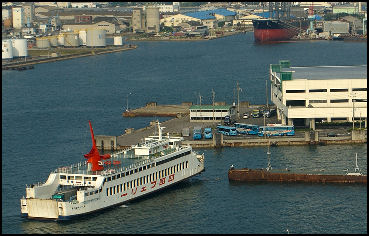
docking ferry Hitchhiking apparently isn't too difficult. Many budget travelers find that it is a good way to get around Japan, meet people and save money. Many travelers who have traveled around Japan using this method have had a good time. Hitchhiking in Japan is generally less dangerous than in the United States. The Japanese often go way out of their way to give hitchhikers a ride and be helpful. It helps if you can speak Japanese.
Ferries and Boats are a relaxing way to travel between the different islands and see Japan's wonderful maritime scenery. Because Japan is a nation of islands the ferry system is quite comprehensive. Ferries link the major ports and many smaller ones. A good way to get an idea of how these routes all interconnect is to purchase a good map which shows the ferry routes.
Major short distance routes are usually serviced by at least one boat an hour in the morning and afternoon. Popular longer routes have several boats a day or even several an hour. Ferries have been hurt by the lower tolls on expressways and the buildings of bridges.
Reservations are advised if you are bringing a vehicle in the high season. Long distance ferries have bars, a cafeteria, television room, shops and information booths. Small discount fares are offered on roundtrip tickets.
There are 32 major ferry services in Japan. Different companies service different routes. Rates vary from US$36 (second class) and US$72 (first class) for the 8-hour journey between Kobe and Imabri to US$100 (second class) and US$200 (first class) for the 38-hour trip between Nagoya and Tomakomai. Ferry Websites: Japan Guide Japan Guide ; Randy’s “Favorite Getaways to Rural Japan Randy’s Ferries in Japan
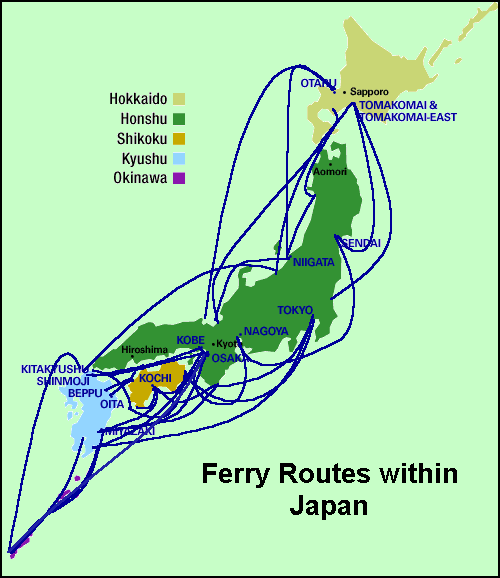
ferry map
Bicycles is a good way to get around in some places but as a rule Japan is not very bicycle friendly. Japan is hilly, the roads are narrow, congested and confusing and you can’t take bicycles on the trains, subways and many buses. In rural areas there are some good bicycle paths and quiet side roads but finding them and get to them takes some research and effort. You can bring your bike free on the plane if you take them apart so they fit certain dimension specified by the airline. Shipping them via Black Cat cost between $40 and $80 depending how far away the destination is and again you have to take the wheels and pedals off and prepare it so it can be shipped. A number of places that welcome tourist throughout Japan now offer bicycle rentals often at fairly cheap price. The bicycle rentals are often near the train stations. Many places rent bicycles for around US$3 an hour and US$20 a day. The local tourist office will direct you to the nearest rental shop. Website:Japan Cycling Navigator Japan Cycling Navigator
Image Sources: 1) 2) 11) 17) 18) 19) 21) Ray Kinnane 3) Kyoto city 4) 6) Tokyo Pictures 5)Andrew Gray Photosensibility 7) ANA 8) JAL 9) Japam Guide 10) Wikipedia 12) Benoa.com 13) 15) Seat 61 website 14) 20) Doug Mann Photomann, 22) Randy’s “Favorite Getaways to Rural Japan”
Text Sources: New York Times, Washington Post, Los Angeles Times, Daily Yomiuri, Times of London, Japan National Tourist Organization (JNTO), National Geographic, The New Yorker, Time, Newsweek, Reuters, AP, Lonely Planet Guides, Compton’s Encyclopedia and various books and other publications.
